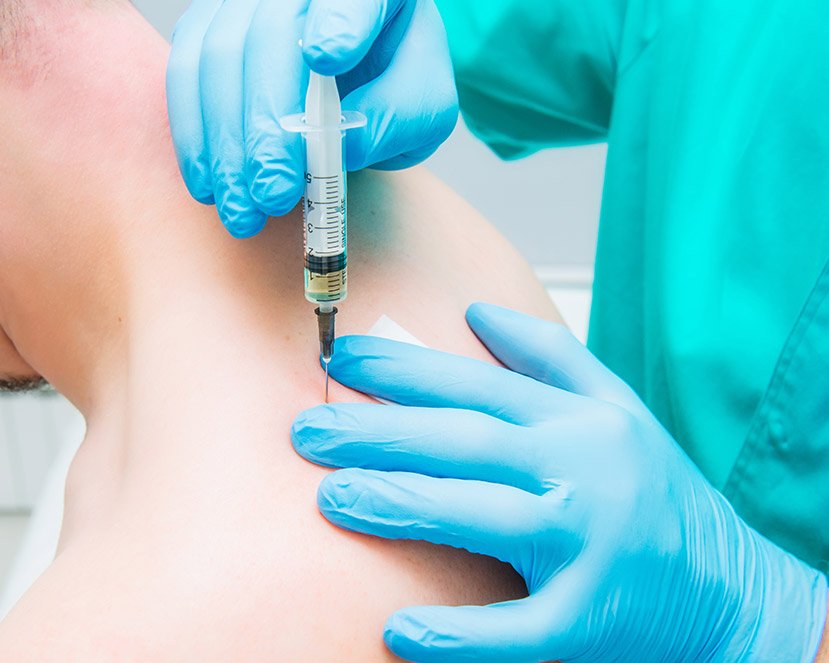Services
PRP Injections
Stem Cell Injections
Trigger Point Injections
Joint Injections with Steroid & Hyaluronic Acid
Headache treatments
Botox Injections
Vitamin Injections
Hormone Management
What is PRP?
Platelet-Rich Plasma (PRP) injections involve drawing a small amount of the patient's blood, processing it to concentrate platelets, and then injecting this plasma back into the targeted area. This treatment is gaining popularity in various medical fields, including orthopedics and dermatology, as the enriched platelets are believed to stimulate tissue repair and promote healing. PRP is often used for conditions like joint injuries, tendonitis, and hair loss, with ongoing research exploring its efficacy in different medical applications.
If you follow professional sports, you may have heard about PRP—many world-class athletes, including Tiger Woods and Kobe Bryant, credit it for accelerating the repair of their sports injuries. PRP is especially helpful with treating soft tissues injuries.
What are stem cells?
Stem cells are undifferentiated cells with the unique ability to develop into various specialized cell types in the body. They play a crucial role in tissue regeneration, repair, and maintenance. There are two main types: embryonic stem cells, derived from embryos, and adult or somatic stem cells, found in various tissues. Due to their remarkable potential, stem cells are at the forefront of medical research for treating diseases and injuries.
Stem cells contribute significantly to the healing of soft tissue and bones by differentiating into specialized cells needed for repair. In soft tissue, such as muscles or tendons, stem cells promote regeneration and aid in restoring normal function after injuries. In bone healing, stem cells can differentiate into osteoblasts, the cells responsible for bone formation, facilitating the repair of fractures and bone defects. This regenerative capacity is what makes stem cells a viable option to treat a wide variety of musculoskeletal issues.
Joint Injections
Joint steroid injections involve the direct administration of corticosteroids into the affected joint to alleviate inflammation and reduce pain. This treatment is commonly employed for conditions like arthritis, bursitis, or other inflammatory joint disorders. Steroids work by suppressing the immune response and inflammatory processes in the joint.
On the other hand, joint injections with Hyaluronic Acid aim to enhance joint lubrication and reduce friction between bones. This naturally occurring substance is injected into the joint space, providing viscosity and shock absorption. Hyaluronic Acid injections are often considered for osteoarthritis patients to improve joint function and alleviate discomfort.
Combining joint steroid injections with Hyaluronic Acid injections is a therapeutic approach known as combination therapy. This dual approach seeks to capitalize on the immediate anti-inflammatory effects of steroids while also addressing long-term joint lubrication and function through the properties of Hyaluronic Acid. This combination is often considered for patients with chronic joint conditions, providing both short-term relief from inflammation and potential longer-term benefits in terms of improved joint mobility and reduced discomfort. However, individual responses to this combined treatment may vary, and consultation with a healthcare professional is crucial for determining the most suitable course of action based on the specific needs of the patient.
Trigger Point Injections
Trigger point injections involve the administration of medication, usually a local anesthetic or anti-inflammatory, directly into specific trigger points or knots in muscles. These injections aim to alleviate pain and discomfort associated with muscle tension, spasms, or knots.
The procedure typically targets trigger points—localized areas of muscle tightness or pain—using a needle to deliver the medication. By directly addressing these points, trigger point injections can provide targeted relief, reducing muscle tension and promoting better mobility.
Commonly used medications include lidocaine or corticosteroids, which help in numbing the area and reducing inflammation. Trigger point injections are often recommended for individuals experiencing conditions such as muscle pain, tension headaches, or fibromyalgia.
The benefits of trigger point injections include rapid pain relief, improved muscle function, and reduced inflammation at specific problem areas.
Vitamin Injections
Vitamin injections involve delivering concentrated doses of essential vitamins directly into the bloodstream through intramuscular or intravenous routes, bypassing the digestive system for faster absorption. Commonly used to address deficiencies or boost overall health, they are especially beneficial for individuals with malabsorption issues or specific health conditions. Vitamin injections often include B-complex vitamins and vitamin C, providing immediate effects and targeted nutrient delivery. However, it's crucial to consult a healthcare professional for guidance on appropriateness and dosage. While helpful in certain cases, vitamin injections should complement a balanced diet rather than replace it.
Contact us.
Have questions about this service or pricing? Contact us today!





